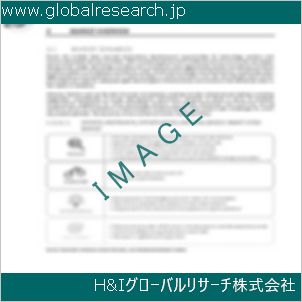Table of Contents
1 Industry Overview of Diisobutylamine
1.1 Definition and Specifications of Diisobutylamine
1.1.1 Definition of Diisobutylamine
1.1.2 Specifications of Diisobutylamine
1.2 Classification of Diisobutylamine
1.3 Applications of Diisobutylamine
1.3.1 Nuclear Application
1.3.2 Non-Nuclear Application
1.4 Industry Chain Structure of Diisobutylamine
1.5 Industry Overview and Major Regions Status of Diisobutylamine
1.5.1 Industry Overview of Diisobutylamine
1.5.2 Global Major Regions Status of Diisobutylamine
1.6 Industry Policy Analysis of Diisobutylamine
1.7 Industry News Analysis of Diisobutylamine
2 Manufacturing Cost Structure Analysis of Diisobutylamine
2.1 Raw Material Suppliers and Price Analysis of Diisobutylamine
2.2 Equipment Suppliers and Price Analysis of Diisobutylamine
2.3 Labor Cost Analysis of Diisobutylamine
2.4 Other Costs Analysis of Diisobutylamine
2.5 Manufacturing Cost Structure Analysis of Diisobutylamine
2.6 Manufacturing Process Analysis of Diisobutylamine
3 Technical Data and Manufacturing Plants Analysis of Diisobutylamine
3.1 Capacity and Commercial Production Date of Global Diisobutylamine Major Manufacturers in 2023
3.2 Manufacturing Plants Distribution of Global Diisobutylamine Major Manufacturers in 2023
3.3 R&D Status and Technology Source of Global Diisobutylamine Major Manufacturers in 2023
3.4 Raw Materials Sources Analysis of Global Diisobutylamine Major Manufacturers in 2023
4 Capacity, Production and Revenue Analysis of Diisobutylamine by Regions, Types and Manufacturers
4.1 Global Capacity, Production and Revenue of Diisobutylamine by Regions 2019-2024
4.2 Global and Major Regions Capacity, Production, Revenue and Growth Rate of Diisobutylamine 2019-2024
4.3 Global Capacity, Production and Revenue of Diisobutylamine by Types 2019-2024
4.4 Global Capacity, Production and Revenue of Diisobutylamine by Manufacturers 2019-2024
5 Price, Cost, Gross and Gross Margin Analysis of Diisobutylamine by Regions, Types and Manufacturers
5.1 Price, Cost, Gross and Gross Margin Analysis of Diisobutylamine by Regions 2019-2024
5.2 Price, Cost, Gross and Gross Margin Analysis of Diisobutylamine by Types 2019-2024
5.3 Price, Cost, Gross and Gross Margin Analysis of Diisobutylamine by Manufacturers 2019-2024
6 Consumption Volume, Consumption Value and Sale Price Analysis of Diisobutylamine by Regions, Types and Applications
6.1 Global Consumption Volume and Consumption Value of Diisobutylamine by Regions 2019-2024
6.2 Global and Major Regions Consumption Volume, Consumption Value and Growth Rate of Diisobutylamine 2019-2024
6.3 Global Consumption Volume and Consumption Value of Diisobutylamine by Types 2019-2024
6.4 Global Consumption Volume and Consumption Value of Diisobutylamine by Applications 2019-2024
6.5 Sale Price of Diisobutylamine by Regions 2019-2024
6.6 Sale Price of Diisobutylamine by Types 2019-2024
6.7 Sale Price of Diisobutylamine by Applications 2019-2024
6.8 Market Share Analysis of Diisobutylamine by Different Sale Price Levels
7 Supply, Import, Export and Consumption Analysis of Diisobutylamine
7.1 Supply, Consumption and Gap of Diisobutylamine 2019-2024
7.2 Global Capacity, Production, Price, Cost, Revenue, Supply, Import, Export and Consumption of Diisobutylamine 2019-2024
7.3 USA Capacity, Production, Price, Cost, Revenue, Supply, Import, Export and Consumption of Diisobutylamine 2019-2024
7.4 EU Capacity, Production, Price, Cost, Revenue, Supply, Import, Export and Consumption of Diisobutylamine 2019-2024
7.5 China Capacity, Production, Price, Cost, Revenue, Supply, Import, Export and Consumption of Diisobutylamine 2019-2024
7.6 Japan Capacity, Production, Price, Cost, Revenue, Supply, Import, Export and Consumption of Diisobutylamine 2019-2024
8 Major Manufacturers Analysis of Diisobutylamine
8.1 Manufacturer One
8.1.1 Company Profile
8.1.2 Product Picture and Specifications
8.1.2.1 Type I
8.1.2.2 Type II
8.1.2.3 Type III
8.1.3 Capacity, Production, Price, Cost, Gross and Revenue
8.1.4 Contact Information
8.2 Manufacturer Two
8.2.1 Company Profile
8.2.2 Product Picture and Specifications
8.2.2.1 Type I
8.2.2.2 Type II
8.2.2.3 Type III
8.2.3 Capacity, Production, Price, Cost, Gross and Revenue
8.2.4 Contact Information
8.3 Manufacturer Three
8.3.1 Company Profile
8.3.2 Product Picture and Specifications
8.3.2.1 Type I
8.3.2.2 Type II
8.3.2.3 Type III
8.3.3 Capacity, Production, Price, Cost, Gross and Revenue
8.3.4 Contact Information
8.4 Manufacturer Four
8.4.1 Company Profile
8.4.2 Product Picture and Specifications
8.4.2.1 Type I
8.4.2.2 Type II
8.4.2.3 Type III
8.4.3 Capacity, Production, Price, Cost, Gross and Revenue
8.4.4 Contact Information
8.5 Manufacturer Five
8.5.1 Company Profile
8.5.2 Product Picture and Specifications
8.5.2.1 Type I
8.5.2.2 Type II
8.5.2.3 Type III
8.5.3 Capacity, Production, Price, Cost, Gross and Revenue
8.5.4 Contact Information
…
9 Marketing Trader or Distributor Analysis of Diisobutylamine
9.1 Marketing Channels Status of Diisobutylamine
9.2 Traders or Distributors with Contact Information of Diisobutylamine by Regions
9.3 Ex-work Price, Channel Price and End Buyer Price Analysis of Diisobutylamine
9.4 Regional Import, Export and Trade Analysis of Diisobutylamine
10 Industry Chain Analysis of Diisobutylamine
10.1 Upstream Major Raw Materials Suppliers Analysis of Diisobutylamine
10.1.1 Major Raw Materials Suppliers with Contact Information Analysis of Diisobutylamine
10.1.2 Major Raw Materials Suppliers with Supply Volume Analysis of Diisobutylamine by Regions
10.2 Upstream Major Equipment Suppliers Analysis of Diisobutylamine
10.2.1 Major Equipment Suppliers with Contact Information Analysis of Diisobutylamine
10.2.2 Major Equipment Suppliers with Product Pictures Analysis of Diisobutylamine by Regions
10.3 Downstream Major Consumers Analysis of Diisobutylamine
10.3.1 Major Consumers with Contact Information Analysis of Diisobutylamine
10.3.2 Major Consumers with Consumption Volume Analysis of Diisobutylamine by Regions
10.4 Supply Chain Relationship Analysis of Diisobutylamine
11 Development Trend of Analysis of Diisobutylamine
11.1 Capacity, Production and Revenue Forecast of Diisobutylamine by Regions and Types
11.1.1 Global Capacity, Production and Revenue of Diisobutylamine by Regions 2024-2029
11.1.2 Global and Major Regions Capacity, Production, Revenue and Growth Rate of Diisobutylamine 2024-2029
11.1.3 Global Capacity, Production and Revenue of Diisobutylamine by Types 2024-2029
11.2 Consumption Volume and Consumption Value Forecast of Diisobutylamine by Regions, Types and Applications
11.2.1 Global Consumption Volume and Consumption Value of Diisobutylamine by Regions 2024-2029
11.2.2 Global and Major Regions Consumption Volume, Consumption Value and Growth Rate of Diisobutylamine 2024-2029
11.2.3 Global Consumption Volume and Consumption Value of Diisobutylamine by Types 2024-2029
11.2.4 Global Consumption Volume and Consumption Value of Diisobutylamine by Applications 2024-2029
11.3 Supply, Import, Export and Consumption Forecast of Diisobutylamine
11.3.1 Supply, Consumption and Gap of Diisobutylamine 2024-2029
11.3.2 Global Capacity, Production, Price, Cost, Revenue, Supply, Import, Export and Consumption of Diisobutylamine 2024-2029
11.3.3 USA Capacity, Production, Price, Cost, Revenue, Supply, Import, Export and Consumption of Diisobutylamine 2024-2029
11.3.4 EU Capacity, Production, Price, Cost, Revenue, Supply, Import, Export and Consumption of Diisobutylamine 2024-2029
11.3.5 China Capacity, Production, Price, Cost, Revenue, Supply, Import, Export and Consumption of Diisobutylamine 2024-2029
11.3.6 Japan Capacity, Production, Price, Cost, Revenue, Supply, Import, Export and Consumption of Diisobutylamine 2024-2029
12 New Project Investment Feasibility Analysis of Diisobutylamine
12.1 New Project SWOT Analysis of Diisobutylamine
12.2 New Project Investment Feasibility Analysis of Diisobutylamine
13 Conclusion of the Global Diisobutylamine (CAS 110-96-3) Industry 2024 Market Research Report
| ※参考情報 ジイソブチルアミン(Diisobutylamine)は、化学式 C₆H₁₅N を持つ有機化合物で、CAS番号は 110-96-3 です。この化合物は、アミン類に属し、二つのイソブチル基(C₄H₉)を含むため、構造的に特徴的な性質を示します。以下にジイソブチルアミンについての詳細を述べます。 ジイソブチルアミンは無色または薄黄色の液体であり、特有のアミン臭を持っています。この化合物は、低沸点(約 162 °C)の液体であり、有機溶媒に可溶ですが、水にはほとんど溶けません。化学的には、ジイソブチルアミンはベース性を持ち、酸と反応して塩を形成することができます。この性質から、強力な塩基または触媒として使用されることがあります。 ジイソブチルアミンは、主に化学合成や製薬、農薬、そして添加剤などの分野で幅広く利用されています。特に、医薬品の合成プロセスにおいて、中間体や前駆体として使用されることが多いです。具体的には、ジイソブチルアミンは、アミノ酸やペプチドの合成において重要な役割を果たすことが知られています。また、ジイソブチルアミンはその特異な構造により、さまざまな反応を促進することができるため、合成化学の分野で重宝されています。 さらに、ジイソブチルアミンは、特定の農薬の合成にも利用されています。これには、農業や園芸における害虫や病気の防除に役立つ化学物質が含まれており、効果的な防除策を提供します。これにより、作物の収量を向上させることが可能となります。 その一方で、ジイソブチルアミンの取扱いには注意が必要です。アミン類は一般的に刺激性があり、皮膚や粘膜に対して有害であるため、安全対策が求められます。また、吸入や摂取も健康に悪影響を与える可能性があるため、使用時には適切な保護具の着用が推奨されます。 ジイソブチルアミンに関連した技術としては、主にその合成法が挙げられます。一般に、ジイソブチルアミンは、イソブチルアルコールを原料に、適切な触媒を用いてアミノ化反応を行うことによって合成されます。このプロセスは、効率的かつ経済的にジイソブチルアミンを生成するための技術として知られています。 また、ジイソブチルアミンはその化学的特性から、反応の触媒や、反応生成物の分離・精製においても役立つ技術が開発されています。これにより、化学産業全体のプロセスが効率化され、資源の最適利用にも寄与しています。 応用の観点からは、ジイソブチルアミンを活用した新しい材料や技術の研究も進められています。特に、触媒作用を利用した新しい反応系の開発や、特定の物質を選択的に吸着・分離するための材料としての応用が期待されています。また、ジイソブチルアミンを用いた環境浄化技術の研究も盛んに行われています。 今後もジイソブチルアミンの応用範囲は広がることが考えられます。持続可能な開発や新しい化学合成法の確立、環境への配慮が求められる中で、ジイソブチルアミンが果たす役割はますます重要になるでしょう。化学技術の進展とともに、今後さらなる応用の展開が期待される有望な化合物であると言えます。 |
❖ 免責事項 ❖
http://www.globalresearch.jp/disclaimer


-gr.jpg)









